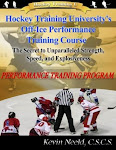
This section of the site is dedicated to swimming training for both sprint and distance events.
There is an obvious relationship between swim distance (or more specifically, duration) and the intensity of effort from the swimmer. Assuming that mechanical efficiency in the water stays the same, the greater the intensity of effort, the greater the swimming velocity. At an elite level, swimmers perform the 200-m freestyle approximately 20-25% slower than the 50-m freestyle.
The point here is that the different durations of each event places different demands on the body's energy systems and will affect the swimmer's training program significantly.
A sprint swimmer typically has greater peak anaerobic power as measured by the Swimgate test compared to a distance swimmer for example. From a strength training perspective, explosive power and power endurance are more important than long term strength endurance. Conversely, the aerobic energy system predominates in events of 400m and above. For these distance swimmers long-term strength endurance becomes the training priority. Remember however, that distance swimmers usually take part in short-duration events during the competitive year so some of their training will mirror that of sprinters - just in different proportions.
The SWIMMERS BODY guide examines each of the components of fitness important in a swimming training plan, along with suggestions for exercise selection and training sessions.























No comments:
Post a Comment